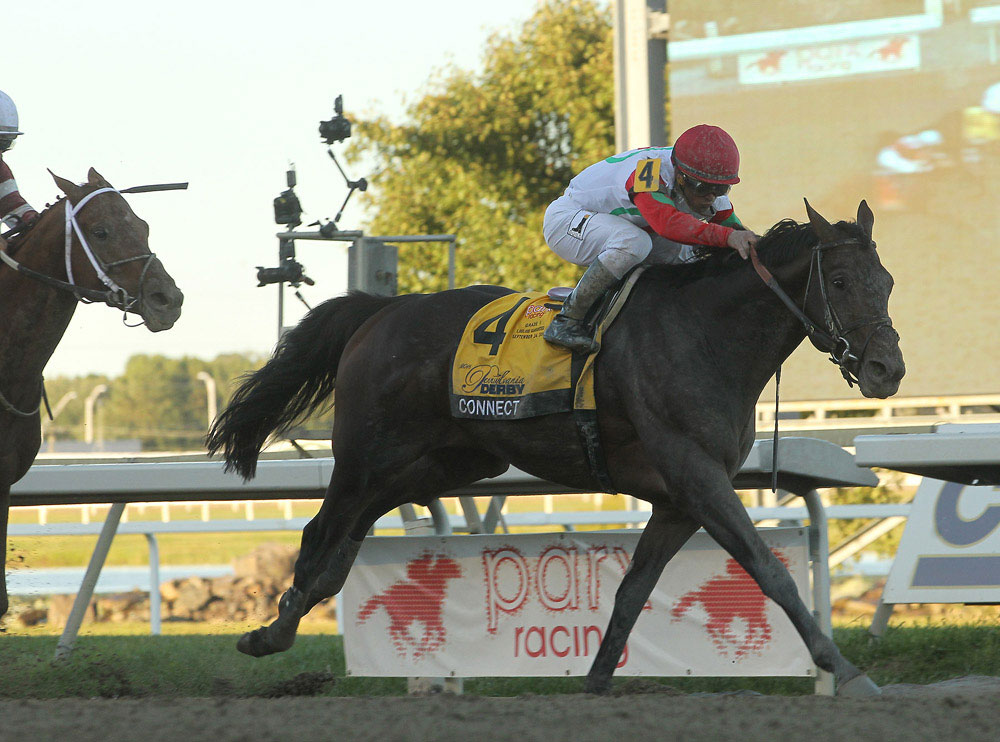By T. D. Thornton
Back in August, the American Graded Stakes Committee (AGSC) forewarned that it might need to reduce the number of graded stakes race designations in 2017. That's because the North American foal crop has declined in every year but one since 2005, while over the same time frame the number of graded stakes assigned by the committee has barely budged from its annual number in the 460-475 range. The AGSC had further cautioned that any graded stakes trimming would likely start at the top, with Grade I races being considered first for downgrading.
It now appears that day of reckoning has arrived for at least two prominent fixtures on the Triple Crown prep-race trail.
Although the full list of downgrades and upgrades is not scheduled to be released until Dec. 2 by the AGSC's parent organization, the Thoroughbred Owners and Breeders Association (TOBA), the Paulick Report on Thursday reported that both Keeneland's GI Blue Grass S. and Aqueduct's GI Wood Memorial S. have been dropped from the top tier and will be assigned Grade II status for 2017.
Another late-season race for 3-year-olds will reportedly get a boost in the other direction: The GII Pennsylvania Derby at Parx, which in recent seasons lured GI Kentucky Derby winners Nyquist (Uncle Mo) and California Chrome (Lucky Pulpit), has apparently earned a Grade I designation.
TDN could not independently confirm the Grade I changes published by the Paulick Report in time for deadline for this story. Reached by phone late Thursday afternoon, TOBA president Dan Metzger said, “I can't comment at this time until all the tracks are notified, and the release is set. [The committee] is still in the process of taking care of that.”
Metzger also declined to comment when asked in general terms whether or not the to-be-released AGSC list is likely to contain significant downgrades in other divisions.
According to the Paulick Report, the Blue Grass (1990-97) and Wood Memorial (1995-2001) both previously spent time as Grade II races before being reinstated to the higher level.
In August, the AGSC's executive secretary, Andy Schweigardt, told Daily Racing Form that in trying to balance the number of graded races against shrinking foal crops and a reduced number of races overall, “We found out that [graded] races are getting harder and harder to fill, and that's because there just aren't the horses to fill them….So, we're going to look at the total number of Grade Is and try to make that number commensurate with the number of horses in inventory….It's not going to happen in one fell swoop. It's going to take a couple of years.”
In 2015, the issue of too many graded stakes at an international level was discussed by panelists at the Pan American Racing Conference in New York. At that symposium, Tom Thornbury, Keeneland's associate director of sales, underscored how quality control in graded and group rankings is important in the sales end of the Thoroughbred industry.
“In our relationship through sales, cataloguing standards are directly tied to the quality of the stock and the races that stock has run in,” Thornbury told the Pan Am audience. “In the end process, you're talking about money. And money is a pretty strict grading system itself.”
TDN will have more detailed coverage of the AGSC gradings when the complete list is released Friday.
Not a subscriber? Click here to sign up for the daily PDF or alerts.






